Flowers that start with the letter R come in a wide variety.
Flowers That Start With R – List Of Flowers That Name Starts With the Letter ‘R’
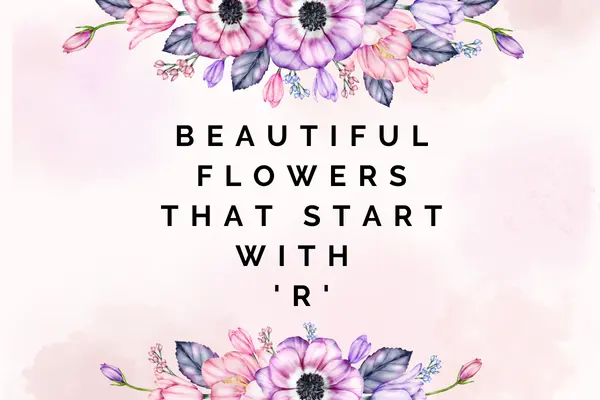
Here are a few popular and straightforward varieties:
Rain Lily
The rain lily, Zephyranthes candida, resembles a crocus in both size and shape. Zephyranthes plants, which are also called zephyr lilies, fairy lilies, and rain flowers, often have three erect petals and three identical, oblong sepals. The foliage is grassy, bright green, and has a tendency to grow prostrately, or near the ground. This reminds me of the grape hyacinth bulb’s slender foliage.
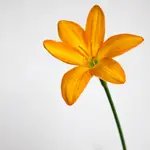
While a single flower only lasts a few days, the bulbs will occasionally bloom throughout the remainder of the season. The first flush of blooms will be the largest, and after that, the bulbs may sporadically bloom for the remainder of the season, especially after a lot of rain.
This perennial flower bulb spreads widely in your flower garden and requires very little maintenance.
In the fall, bury your bulbs four to eight inches deep; if you live in a region with sandy soil or want to make sure your plant is resilient, bury it a little deeper. When planted while they are actively growing, these bulbs also flourish; it is advantageous for gardeners to view the leaves and blossoms before making a purchase.
Ranunculus
The flowers of the ranunculus are stunning and almost too perfect to be true. They feature tissue-thin petals on their rose-like flowers, which range in color from cream and pale yellow to apricot, pink, orange, red, and burgundy. The magnificent ranunculus flowers are a common sight in high-end flower shops and wedding bouquets, despite being uncommon in backyard gardens.

You can grow your own ranunculus flowers, did you know that? You can enjoy these lovely blooms both inside and outside by planting corms in a container or in the garden. They look amazing in flower beds, borders, and container plantings, and they make excellent cut flowers. Test it out!
Ranunculus sprout from tiny claw-like corms. Larger corms contain more food energy stored than smaller corms, so your plant will be stronger and produce more flowers.
Beautiful cool-weather plants called ranunculus to need plenty of bright light each day to survive. In most regions, they should ideally be grown in full sun, but in hot climes, they can need some sun protection during the warmest portion of the day to keep them from withering.
Rock Rose
The Mediterranean region is home to the 18 species of shrubs that make up the rock rose genus (Cistus). Low- to medium-sized shrubs are well-known in gardening. A variety of garden hybrids are helpful in warm climates. The hybrids have solitary, rose-like blooms. They can be pink, rosy-purple, or white in color. The leaf is fragrant and frequently has resins that are very combustible.
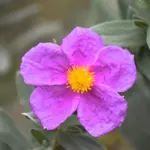
With white petals and reddish-brown bases, C. ladanifer produces labdanum, a resin used in perfumery. The taller plant, C. albidus, grows up to 2 meters (6 feet) tall and bears lilac to rose-colored blooms. Large white flowers of up to 10 cm (4 inches) across can be found on the low shrub C. palhinhae, which is around 45 cm (1.5 feet) tall. C. incanus bears rose-pink flowers up to 6 cm (2.4 inches) across and a height of around 1 meter (3 feet).
Rock Rose can be the best Bach Flower Remedy for you if you’re the kind of person who is particularly sensitive and finds that their energy is easily sapped. During a crisis, Rock Rose can assist to reduce severe anxiety and promote tranquility.
Rondeletia
An evergreen shrub from Panama and Cuba, fragrant Panama rose is widely grown in gardens in India. With opposing, sessile, ovate to oblong leaves that are 2 inches long and have wavy margins, it normally reaches heights of 6 to 10 feet.
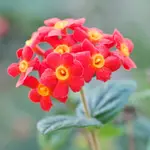
The plant produces lovely, fragrant reddish-orange tubular flowers with yellow throats from summer to fall. At the ends of branches, flowers appear in numerous-flowered cymes and can be up to 5 inches across.
In Mexico, between the “loft of the wanderer” and the River Papagayo, Alexander von Humboldt and Aimé Bonpland first came across fragrant Panama rose. In 1818, Kunth gave the rose its scientific name in honor of Guillaume Rondelet, a Montpellier, France-based 16th-century naturalist, physician, and botany instructor.
Previously a common garden plant, Rondeletia amoena is now rarely encountered. Peter Valder finds this unfortunate because every spring, this hardy Central American shrub blooms magnificent salmon-pink flowers.
Rose
Roses are lovely flowers that come in a variety of hues, including white, yellow, pink, and red. Many of them have a wonderful aroma and are indigenous to temperate parts of the planet. Roses are cultivated for their aesthetic appeal and fragrant qualities, and they are a wonderful addition to any garden.

Asia is home to the vast majority of rose species, while North America contains fewer species, and Europe and northwest Africa have even fewer. Roses from various parts of the world have the capacity to hybridize, resulting in the development of new types that incorporate traits from both parent forms.
Because of this, it is challenging to distinguish between different rose species. Only ten or fewer different species—the majority of which were indigenous to Asia—out of the numerous varieties of garden roses we have today were engaged in crossbreeding.
Roses are lovely flowers that come in a variety of hues, but red is by far the most popular. They feature compound, serrated leaves and a tall stem that is covered in thorns. Wild roses typically have five petals per blossom, although cultivated roses can have double that number.
A rose flower can range in size from as small as 1.25 cm (0.5 inches) in diameter to as large as 17.5 cm (7 inches), depending on the variety. The fruit of the rose plant, which is the floral cup, is fleshy and occasionally edible. It is called a hip and is often red or orange in hue.
Rose of Sharon
In the hibiscus or mallow, family, the rose of Sharon (Hibiscus syriacus), sometimes known as shrub althaea, is a shrub or small tree (Malvaceae). Despite being from eastern Asia, it is frequently grown as an ornamental because of its colorful blossoms.
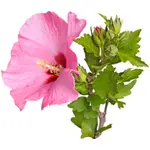
It has a 3 m (10 ft) maximum height and often develops in a low-branching pyramidal growth habit. The numerous variations of the mallow-like blooms come in a variety of colors, from white to pinkish lavender to purple, usually with a crimson background; some forms have double flowers.
Rose of Sharon is a great plant for novice gardeners. Rose of Sharon bushes are hardy in USDA zones 5–9 and can withstand a variety of environmental factors, including poor soil, heat, humidity, drought, and air pollution.
White, red, pink, lavender, blue, and bicolor flowers come in single- or double-formed varieties. Plants have an elegant vase-shaped habit and have serrated, tiny, lovely green leaves. The fall foliage is not important.
Rudbeckia
In Zones 4-9. Rudbeckia is a perennial flowering plant that can endure cold climates. Black-eyed Susan, Gloriosa Daisy, and Yellow Ox Eye are just a few of their common names.

In North America, rudbeckia, which belongs to the Asteraceae family, is a native of both dry grasslands and wet forests. Although the majority of species are thought to be perennial, there are some annual species, such as R. hirta. The R. hirta, R. fulgida, R. Grandiflora, and R. trilobite species are frequently found.